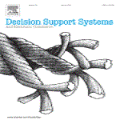Cardiovascular diseases and heart failures in particular are the main cause of non-communicable disease mortality in the world. Constant patient monitoring enables better medical treatment as it allows practitioners to react on time and provide the appropriate treatment. Telemedicine can provide constant remote monitoring so patients can stay in their homes, only requiring medical sensing equipment and network connections. A limiting factor for telemedical centers is the amount of patients that can be monitored simultaneously. We aim to increase this amount by implementing a decision support system. This paper investigates a machine learning model to estimate a risk score based on patient vital parameters that allows sorting all cases every day to help practitioners focus their limited capacities on the most severe cases. The model we propose reaches an AUCROC of 0.84, whereas the baseline rule-based model reaches an AUCROC of 0.73. Our results indicate that the usage of deep learning to improve the efficiency of telemedical centers is feasible. This way more patients could benefit from better health-care through remote monitoring.
翻译:心血管疾病和心脏衰竭是造成世界非传染性疾病死亡的主要原因。经常的病人监测可以使开业医生能够及时反应和提供适当的治疗,从而更好地进行医疗。远程医疗可以提供持续的远程监测,使病人能够留在家中,只需要医疗遥感设备和网络连接。远程医疗中心的限制因素是病人数量可以同时监测。我们的目标是通过实施决策支持系统来增加这一数量。本文件调查一个机器学习模型,根据病人关键参数来估计风险得分,以便每天对所有病例进行分类,帮助开业医生将其有限的能力集中在最严重的病例上。我们提议的模型达到0.84的AUCROC,而基于基线规则的模式达到0.73的AUCROC。我们的结果显示,利用深层次学习提高远程医疗中心的效率是可行的。通过远程监测可以使更多的病人从更好的保健中受益。




